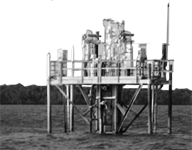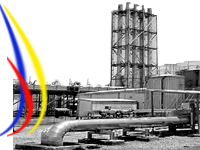Hydrocarbon Occurrence:
Several oils shows have been earmarked. The known oil seeps of Tanzania are located at Tundaua on the west coast of Pemba Island, Wingayongo and at Msimbati near Mnazi Bay and in the Interior Rift Basins. The Pemba Island seep indicates a marine source, which has been correlated with Campanian-Maastrichtian shales. However, the typing of the seep does not correlate with oil shows from the nearby Pemba-5 well. It appears that two separate sources are involved. The Wingayongo oil seep at the northern flank of the Rufiji Trough shows unusual biomarker characteristics, which have been interpreted to be derived from a source rock deposited in a restricted carbonate, lacustrine environment. The Makarawe Shale (Bajocian) is a possible source of this seep. Seeps at Msimbati near the Mnazi Bay gas discovery indicate two families of oil; one is interpreted to be generated from a carbonate source rock deposited in a strongly reducing environment; the other contains significant terrestrial organic matter and biomarkers of Late Cretaceous or younger age. A number of oil seeps and slicks have been reported from the Interior Rift Basins. Oil seeps were reported from Lake Tanganyika, as early as 1896, and in more recent times, project PROBE found an oil film on the lake. Oil shows have been reported from the Pemba-5, Mandawa-7, Mafia-1, Mita Gama-1 wells. Cut fluorescence and staining from seven other wells and three boreholes have been observed. Songo Songo wells yielded small amounts of oil, which are low in sulfur with 33E - 47E API.

